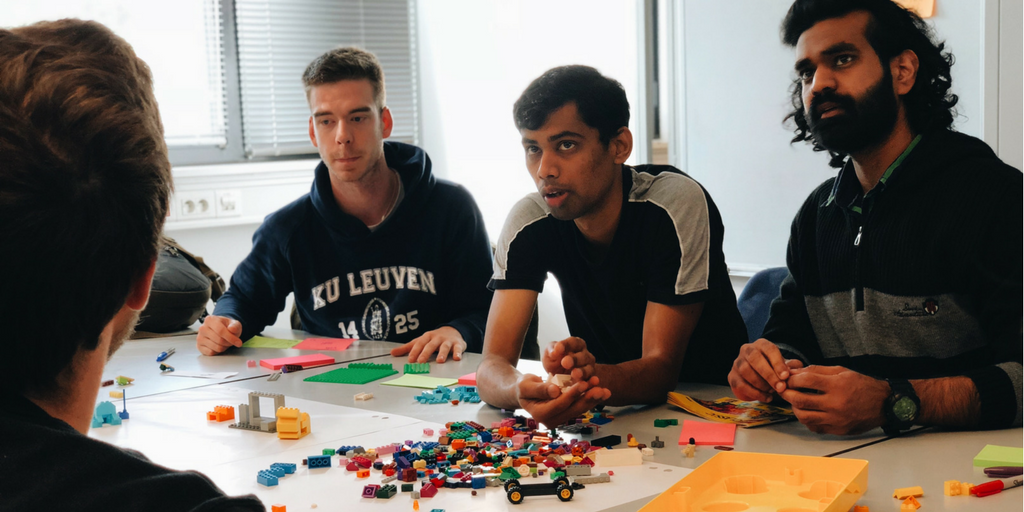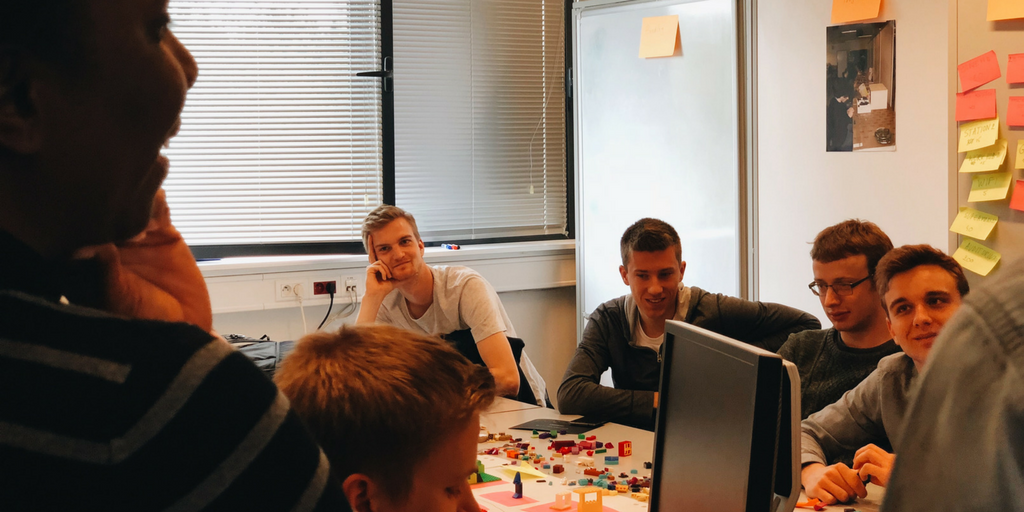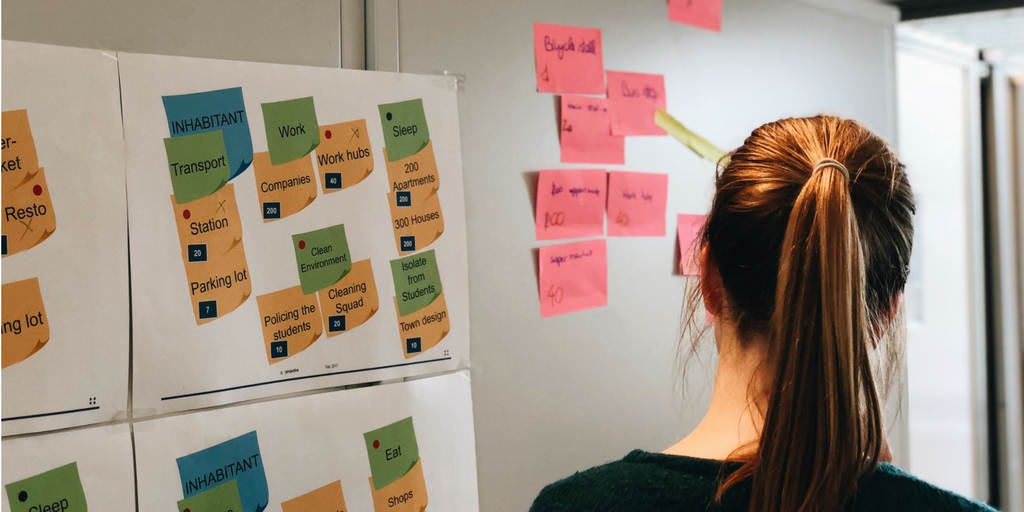Scrum in five minutes
on 15 May 2021 for GraduatesEver heard of scrum? Small tip: it doesn’t have anything to do with rugby! Scrum is an agile framework for managing work. We recently hosted a scrum workshop for around 70 graduating KU Leuven engineers together with Projective, a business, technology and innovation consulting and change firm.
Want to find out how that went? Well go ahead! Here’s what happens when you put 70 engineers in a room full of Legos.
But today, we’re going to take you through the basics and essentials, the things you need to know to become a Scrum Master. Just one thing, before you draw any conclusions. It’s about way more than playing with Legos!

Roles
While most companies and organizations have several roles involved in delivering a finished product, a basic scrum team consists out of three core predefined roles: The product owner, a development team and the scrum master.
The product owner
The product owner is responsible for the viability of the finished product. By representing the product’s stakeholder and being the voice of the customer or end user, the product owner ensures that the entire team brings value to the business.
The focus should be on the business side. That means that the product owner can spend his or her time liaising with potential customers but doesn’t have a say in the way the entire team reaches a technical solution. He or she is also responsible for the creation of a backlog, which is a list of tasks and requirements that the finished product needs.
Development team
It’s the development team’s task to deliver the end product. It’s important to note that there should be several disciplines in a development team even though its members are normally referred to as developers.
A good development team is self-organizing.
Scrum master
A scrum master is not just another project manager or team lead. He or she is a different breed. It’s the scrum master’s job to keep the entire team focused and follows the scrum framework. By removing possible barriers the scrum master acts as a buffer between the scrum team and any obstacles or hurdles that they might come across.

Workflow
Sprints, daily stand-ups, retrospectives, … Where to begin? There are several predetermined stages in the scrum framework. Let’s go through them one by one.
Sprint
A sprint or iteration is a predefined timeframe of usually around two weeks in which the team strives to deliver a finished product.
Sprint planning
Each sprint starts with a thorough sprint planning. In this phase the scrum team will decide which items from the backlog will be tackled.
Once they agreed on the work that is intended to be done, the team will prepare a sprint backlog that lists all the specific tasks that need to be done to complete the selected backlog items.
For a regular, two week sprint, sprint planning takes around four hours.
Daily scrum
A daily scrum or stand-up meeting is a daily meeting with all members of the development team. During each day of a specific sprint they meet at the same time and place to discuss their progress in about 15 minutes or less.
Each member of the development team typically prepares three questions:
- What have I completed since the last meeting?
- What do I plan to complete today?
- What is getting in my way? (This is where the scrum master comes in)
Sprint review and retrospective
At the end of each sprint the entire scrum team should hold two events: the sprint review and retrospective.
During a sprint review the team takes the time to review the work that was completed (and the planned work that didn’t got finished) and presents this to the stakeholders in a demo. The team and the stakeholders then take the time to mutually decide on what the team should work on next.
A retrospective is meant for the scrum team itself. They take the time to reflect on the previous sprint to determine what went well and what could be improved. This event should be facilitated by the scrum master whose job it is to focus on continuous process improvement.

More than sharpies and post-its
So there you have it, the scrum basics. But remember, it is always a work in progress. Because scrum is kind of like poker: you can learn the rules in 10 minutes bit it takes a long time to get great at it.
Do you want to be great at it? Do you want to discover more about the principles of Agile, Lean and Scrum? Then we’ve got you covered! In our open START SMART programme you have the possibility of following a two day training on agile and scrum. So go ahead and find out why this training programme for young IT talents is the real deal.
Tags: exellyst , innovation , scrum , workflow



